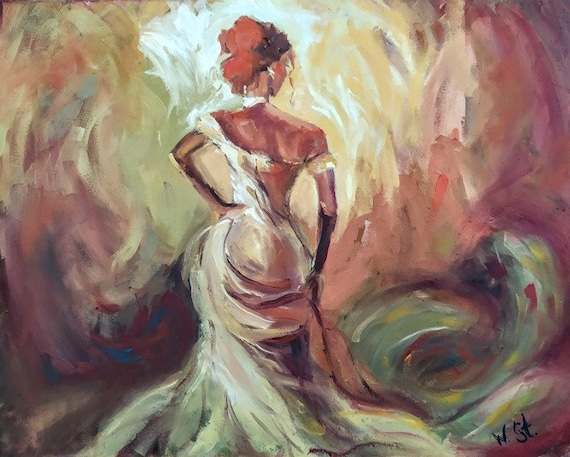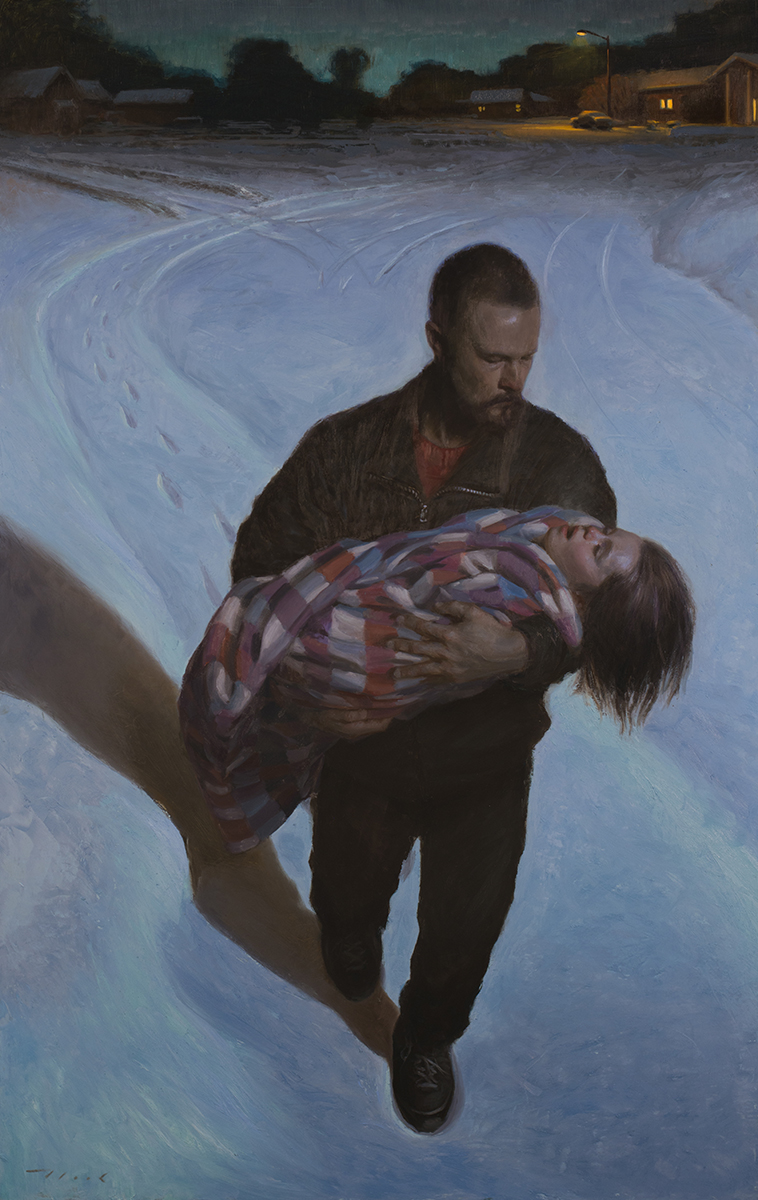Introducing the Keys Behind Meaningful Figurative Oil Painting Styles
Introducing the Keys Behind Meaningful Figurative Oil Painting Styles
Blog Article
The Evolution of Metaphorical Oil Paint: Comprehending Its Historical Significance and Modern Interpretations
The evolution of metaphorical oil paint acts as a compelling lens where to take a look at the interplay between imaginative expression and historic context. From the precise naturalism of the Renaissance to the emotive power of the Baroque, each era has added layers of definition and strategy to this ageless medium. Contemporary musicians, drawing from this rich heritage, are currently reinterpreting the human figure in manner ins which challenge traditional stories. As we check out these transformations, one have to think about how the discussion between previous and existing informs not only creative practice yet also social reflections in a significantly complex world.
Beginnings of Metaphorical Oil Painting
The beginnings of metaphorical oil painting can be traced back to the early Renaissance in Europe, especially in the 15th century. The growth of oil paint allowed for greater depth of color and information, enhancing the realism and vibrancy of their job.

In this transformative period, numbers were usually shown within contextually abundant atmospheres, showcasing not only their physical attributes however likewise their mental states. Pioneers such as Jan van Eyck and Titian harnessed the tool's convenience, utilizing layering methods to achieve luminance and structure. This advancement assisted in the portrayal of intricate textiles and the nuances of skin tones, adding to the development of portraiture and narrative scenes.
In Addition, the Renaissance focus on humanism fostered an admiration for uniqueness, which consequently influenced artists to create even more vibrant and relatable figures - figurative oil painting. Because of this, figurative oil paint arised as a powerful lorry for narration and psychological interaction, preparing for future imaginative movements and designs
Key Historic Motions
Significant historic movements have actually formed the development of metaphorical oil painting, each adding unique approaches and techniques that increased the medium's opportunities. The Renaissance noted a turning point, emphasizing realistic look and the human kind, with artists like Leonardo da Vinci and Michelangelo pressing the borders of anatomical precision and perspective. Following this, the Baroque age brought significant contrasts of light and shadow, exhibited by Caravaggio, that infused religious styles with extreme emotionality.
The 19th century introduced Romanticism and Realistic look, where musicians such as Delacroix and Courbet challenged classic suitables, concentrating on individual expression and daily life. The arrival of Impressionism further reinvented the tool by stressing the effects of light and shade, bring about a departure from conventional depiction.
In the very early 20th century, activities like Expressionism and Cubism redefined figurative painting through abstraction and the exploration of psychological depth. Each of these activities not just reflected the societal modifications of their times however additionally laid the foundation for modern analyses. The interplay between these historical movements has produced an abundant tapestry of ideologies and designs, affecting modern-day musicians in their quest of catching the human experience on canvas.
Techniques and Products Advancement

Throughout the Baroque duration, techniques such as chiaroscuro and sfumato arised, enhancing the psychological resonance of metaphorical structures. Musicians started to experiment with lusters and impasto, manipulating appearance and luminosity. By the 19th century, technologies like using pre-mixed paints in tubes revolutionized availability, allowing musicians to repaint en plein air and capture the fleeting results of light.
The 20th century witnessed the introduction of artificial pigments and mediums, which increased websites the palette and modified the consistency of oil paints. The expedition of new application methods, such as scheme knives and brushes of differing rigidity, further diversified imaginative expression. Collectively, these developments mirror the developing connection in between products, techniques, and the artistic vision integral in figurative oil painting.

Contemporary Analyses
Contemporary analyses of metaphorical oil paint mirror a vibrant discussion in between practice and innovation, where musicians test developed standards and discover varied motifs. This advancement shows up in numerous means, as modern musicians blend classical techniques with modern concepts, often addressing social, political, and personal stories.
Several experts attract motivation from historical works, yet they instill their items with contemporary point of views, utilizing the human form as a vehicle for discourse on society, gender, and identification. Artists progressively try out abstraction, distortion, and mixed media, which allows for a more comprehensive interpretation of the figure and its context.
In addition, using brilliant color palettes and unusual structures typically serves to interrupt conventional viewing experiences, prompting vital engagement from target markets. This shift in emphasis extends past appearances; it shows a growing understanding of the complexities of human experience in an interconnected globe.
As figurative oil painting remains to progress, it remains a crucial medium for checking out the nuances of contemporary life, personifying both a respect for heritage and a dedication to modern idea. The outcome is an abundant tapestry of expression that resonates with the complexities of the contemporary human problem.
Influence On Modern Art
The effect of metaphorical oil paint on modern art is profound, as it has actually consistently inspired a myriad of creative motions and techniques throughout the 21st and 20th centuries. From Expressionism to Surrealism and beyond, the exploration of the human figure has actually stayed a main motif, permitting musicians to convey complex emotions and narratives. This focus on metaphorical depiction has actually brought check about a re-examination of traditional techniques, leading to ingenious strategies that mix realism with abstraction.
Furthermore, contemporary artists have accepted figurative oil painting as a way to attend to political and social problems, using the medium to challenge understandings of sex, society, and identification. The rebirth of interest in figurative operate in current years shows a wishing for link in a significantly electronic globe, where human experience and feeling are you could try this out paramount.
Furthermore, the dialogue between figurative oil paint and contemporary art appears in the jobs of musicians such as Kehinde Wiley and Jenny Saville, who make use of historic recommendations while infusing their pieces with modern significance. Eventually, figurative oil paint proceeds to shape and redefine modern imaginative expression, emphasizing its enduring significance in the art globe.
Final Thought
The advancement of figurative oil paint underscores its historic significance and versatility throughout various creative activities. Ultimately, metaphorical oil paint remains a crucial tool for exploring the human experience, resonating exceptionally in today's electronic landscape.
The evolution of metaphorical oil paint offers as a compelling lens with which to check out the interplay between creative expression and historic context.Substantial historic movements have shaped the development of metaphorical oil paint, each adding one-of-a-kind viewpoints and methods that broadened the tool's opportunities.As historic activities shaped the trajectory of figurative oil painting, the techniques and materials utilized by artists have also undertaken significant changes. figurative oil painting.The effect of figurative oil painting on contemporary art is profound, as it has constantly influenced a myriad of creative motions and methods throughout the 20th and 21st centuries.The development of figurative oil painting highlights its historical importance and versatility across various artistic activities
Report this page